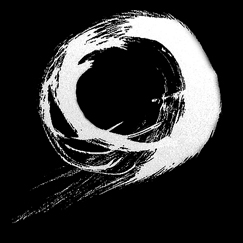
BuddhaWeg-Sangha
Mitglied der Association Bouddhiste Zen d'Europe
Mitglied der Deutschen Buddhistischen Union
|
Shikantaza - Mushotoku
- Hishiryo
|
|
Looking back to the history of Zen, we can see five important Masters who created the causes for the development of Zazen from a Buddhist practice in a part of what is today India to a practice that exists now in most parts of the world: - Bodhidharma brought the practice of
sitting facing the wall from India to China, But these Masters created only the causes, without continuous practice over centuries and teachings that spoke to those practicing, that dissemination would not have happened. What causes shall we today create for the further development of Zen in Europe? To answer this question, I think it's important to take a more detailed look into what Master Deshimaru taught: Master Deshimaru's basic teaching was about Zazen. He taught Zazen to Europeans who were not monastics, but people living professional lives in a civil society. Knowing that in Japan the practice of Zazen got almost lost due to the overwhelming importance of ceremonies in the monasteries, Master Deshimaru reduced the ceremonies to a minimum and didn't found a monastery (in contrast to Dogen, Suzuki and Maezumi), instead he built (together with his disciples) La Gendronnière as a temporary practice place for hundreds of his disciples from all over Europe. In a time in which nationalistic tendencies grow all over Europe, the existence of an international sangha is a legacy more important than ever. The monasterizing and japanizing of the practice at La Gendronnière is a deplorable deviation from the vision of Master Deshimaru that also endangers the continuous existence of an international sangha whose main reason for existence is the shared practice of Zazen, not the participation in sophisticated rituals performed by specialised monastics. Inseparable from the practice of
Zazen is the Bodhisattva-ideal: We practice no to perfection
ourselves (also it's a most welcome side-effect), but our practice
is part of a much larger vision, that In a time in which egotism and materialism risk to destroy not only human societies, but endanger all life on the planet Earth, acting as a Bodhisattva is of utmost importance. The Bodhisattva-ceremony gives every practitioner the chance to publicly commit himself or herself to this way of acting. The monthly Ryaku fusatsu offers the possibility to renew this commitment. Zazen is a spiritual practice, not a means to reduce stress and live in a more relaxed way (this is only another most welcome side-effect of the practice of Zazen). The spiritual dimension of Zazen becomes visible in wearing the Kesa in its form of 5, 7 or 9 bands. The transmission of the Kesa and the teaching of the way to sew it, is a merit of Master Deshimaru. In a time in which the spiritual orientation in industrialized and post-industrialized societies is fading away, wearing the Kesa is an important visible sign that there is a dimension that goes far beyond the limits of our individual personalities. I see the practice of Zazen in a non-monastic and multi-national Sangha, the Bodhisattva-ideal and the Kesa as the most important parts of Master Deshimaru's legacy. We have to protect this legacy in our individual practice and in our practice as sangha. If one of these elements gets lost, our practice risks to lose (at least parts of) its liberating effect. But to perpetuate the teaching of Master Deshimaru is not enough, we have to set the causes for further developments. Let´s be realistic: The practice and teaching of Zazen has no visible impact in any of today's societies. If we want the impact to grow, additional steps are necessary. Most important seems to me the authorization of many (!) more women as teachers. The teaching of the dharma will stay incomplete as long as reality is only seen through male eyes and female experiences are not integrated. At Master Deshimaru's death the disciples who became his successors were in their mid-thirties to mid-forties. To recommence the authorization of teachers in this age-group is necessary: Without confidence in the younger generation, in its capacity to practice and to teach, Zen in Europe risks to die of sclerosis. Practicing Zazen, we study with and through our bodies. But at a time, where different approaches to Buddhism coexist, it is important for teachers to also have a sound knowledge of Buddhism, and as Zen-teachers especially of Zen-Buddhism. Humans are beings capable of asking questions. If Zen-teachers are not able to answer based on the dharma, people will turn to Buddhist schools and teachers able to answer their questions. Therefore qualified studies on different subjects need to be offered. For a multinational sangha, it is important to unite not only in the silence of Zazen, but also in the shared practice of ceremonies. The lingua franca for the texts recited during ceremonies has to be Sino-Japanese. But for the traditional texts to really touch the hearts and minds of practitioners it is important to create translations that can be recited and to recite them on the local and national level. Solidarity and commitment to social justice on all levels of society and in international relations seems to me a consequence of the Bodhisattva-ideal and the precepts. The sangha should support existing activities and create, if necessary, own activities to realize a juster society, without losing the concentration on its foundation: Zazen. Master Deshimaru taught shikantaza, mushotoku and hishiryo. He put all his energy in the practice of Zazen and in laying the basis for the development of Zen in Europe, without being attached to the success of his mission. Not being attached allows, to be open to what comes up at a certain moment and work with it. We may have ideas about what will be helpful for the further development of Zen in Europe, we may try to set causes for further developments, but let's not forget shikantaza, mushotoku and hishiryo!
|